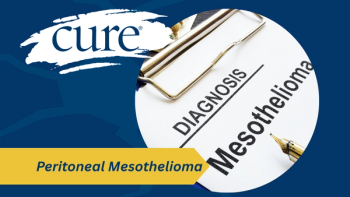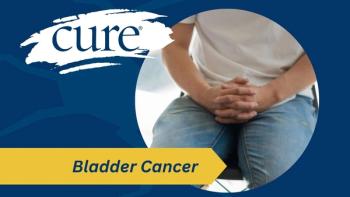
Physician Says Ninlaro Approval Represents "Huge Advance" in Multiple Myeloma
In an interview with CURE, Philippe Moreau discusses the significance of Ninlaro's approval and the TOURMALINE-MM1 study.
In November 2015, the FDA approved Ninlaro (ixazomib) in combination with Revlimid (lenalidomide) and dexamethasone as a treatment for patients with multiple myeloma who have received at least one prior therapy.
The approval was based on data from the phase 3 TOURMALINE-MM1 trial, which showed a median progression-free survival (PFS) of 20.6 months with Ninlaro plus Revlimid and dexamethasone compared with 14.7 months with Revlimid and dexamethasone alone.
The overall response rate (ORR) with Ninlaro was 78.3 percent compared with 71.5 percent for Revlimid and dexamethasone alone and the complete response rate with Ninlaro was 11.7 percent versus 6.6 percent with the doublet.
The study included 722 patients with a median age of 66 years. Fifty-nine percent of patients had received one prior therapy and 77 percent had relapsed multiple myeloma. Overall, 88 percent of patients were ISS stage 1/2 and 19 percent had high-risk cytogenetics by FISH criteria.
The study and the corresponding approval are extremely significant, says Philippe Moreau, head of Department of Hematology, Centre Hospitalier et Universitaire in Nantes, France.
“This is a very, very important study,” says Moreau. “I think that it is a huge advancement for the field.”
What were the goals of the TOURMALINE-MM1 trial?
In an interview with CURE, Moreau further discusses the significance of Ninlaro and the TOURMALINE-MM1 study, as well as the benefit of an oral regimen for the treatment of patients with relapsed multiple myeloma.The TOURMALINE-MM1 study is a prospective, randomized, double-blind, placebo-controlled study comparing Revlimid, dexamethasone, and placebo with Revlimid, dexamethasone, and Ninlaro. The combination of Revlimid and dexamethasone is currently one of the standards of care in the relapse setting. Ninlaro was the first oral proteasome inhibitor available.
What are the most significant results?
The goal of the study was to look at the PFS of patients receiving the combination of Revlimid, dexamethasone, and Ninlaro. The main inclusion criteria were relapsed and refractory myeloma with one to three prior lines of treatment.We showed that the duration of response and PFS are highly significantly improved with the addition of Ninlaro. The benefit is a six-month improvement in PFS. All subgroups of patients are benefiting from the addition of Ninlaro to Revlimid and dexamethasone, including the younger population of patients, patients older than 75, patients previously exposed to Velcade (bortezomib), and patients with eitherstandard or high-risk cytogenetics. Through a special focus on cytogenetics, we were able to show that the PFS in the Ninlaro group was basically identical to the PFS in patients with standard-risk cytogenetics. It means a lot.
What impact does the option of an oral triple combination have on patients?
From a safety point of view, the triplet is very safe. The addition of Ninlaro is not adding any toxicity. We don’t have any rash issues as we did in the phase 1 early development of the drug. We have more thrombocytopenia, but it does not result in a higher frequency of bleeding; more transfusions are not required. Overall, the results are very important.This is the first all-oral triple combination for the treatment of this disease. It is very effective, safe, and convenient. Patients are able to take the drug at home. The drug is administered orally at 4 mg on days 1, 8, and 15. Revlimid is administered orally at 25 mg on days 1 to 21, and dexamethasone is administered orally at 40 mg on days 1, 8, 15, and 22. It is very convenient.
Do you think triplet regimens are going to become more common in the relapsed setting?
Kyprolis (carfilzomib), which is a very effective drug for this patient population, requires patients to return to the hospital six times a month to receive an IV infusion. With Velcade, patients have to go to the hospital four times every three weeks. We are now moving to an all-oral regimen and that convenience is very, very important for the patient.I think we are really moving from a two-drug standard to a three-drug standard in the relapsed setting.
We have several trials looking at Revlimid, dexamethasone, and a third drug. We have data on Revlimid and dexamethasone plus Empliciti (elotuzumab) as well as Revlimid and dexamethasone plus Kyprolis. Now, we have data on Revlimid and dexamethasone plus Ninlaro. Very soon, we will have data on Revlimid and dexamethasone plus Darzalex (daratumumab).
Triple combinations will likely become widely used. The questions now are, 'How are we going to use these different regimens? How are we going to select the optimal option?' That is something that is still unclear. Discussing with the patients what their preferences are will become very important.





